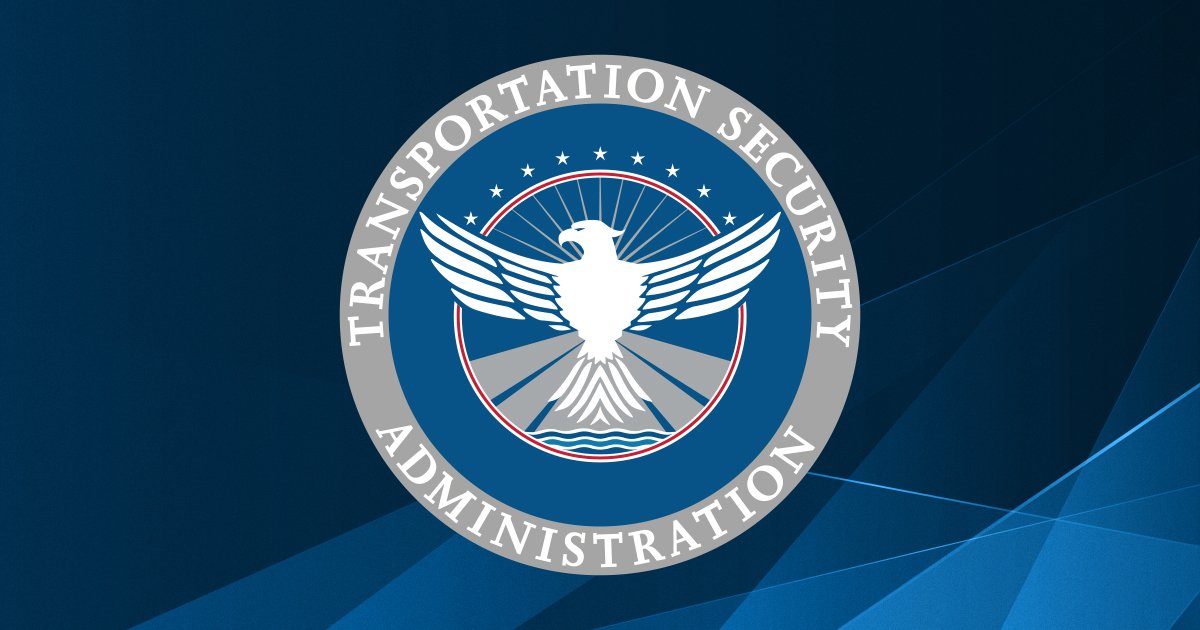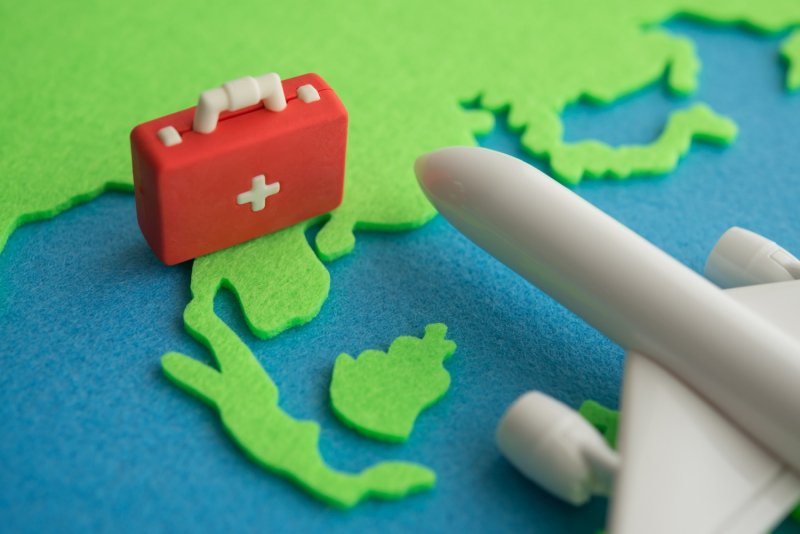Tips & Advices
Travel Tips 2025 | Transportation Security Administration

1. Pack smart and start with an empty bag. If you start packing with an empty bag, you are less likely to bring prohibited items to the checkpoint. Not sure what’s prohibited? Visit our “What Can I Bring?” webpage.
Know the 3-1-1 liquids rule. Remember, if you can spill it, spray it, spread it, pump it or pour it, then it is a liquid and must be packed in your checked bag. Pack liquids, gels and aerosols larger than 3.4 ounces in a checked bag to avoid having the carry-on bag pulled aside, opened by a Transportation Security Officer (TSO), and then potentially having to voluntarily abandon the item because it is over 3.4 ounces. If you are traveling with an infant, most items in your diaper bag are exempt from TSA’s 3-1-1 rule. Breast milk, powdered formula, baby food, bottles and sippy cups are all allowed to fly in the passenger cabin of the aircraft. This also goes for liquid and cream medications. Please separate these items from your bag and place them into a different bin for X-ray screening. If your item alarms, additional screening may be required.
2. Arrive early. Travelers are taking to the skies in record numbers, so plan to arrive at least two hours prior to your flight’s scheduled boarding time to allow enough time to park, navigate to the terminal, check luggage with the airline if needed and go through security screening before arriving at your gate. Arrive at least three hours before international flights.
3. Bring an acceptable ID. Before heading to the airport, make sure you have acceptable identification and make it a REAL ID since you must have a REALID-compliant ID to fly by May 7, 2025. Visit the TSA website to learn which IDs are accepted by TSA at the entrance to the security checkpoint. Identity verification is a critical step of the screening process.
4. Do you carry a firearm? Prepare, pack and declare. If you plan to travel with a firearm, you must properly pack the firearm in a hard-sided, locked case in your checked luggage and declare it with the airline while checking in at the airline ticket counter. Bringing a firearm in your carry-on bag to a TSA checkpoint, even accidentally, is expensive and will cause delays for you and others, even if you have a concealed carry permit or live in a constitutional carry jurisdiction. If you bring a firearm to the security checkpoint on your person or in carry-on bag, TSA will contact law enforcement, who may arrest or cite the passenger, depending on state law. TSA may impose a civil penalty up to almost $15,000 for the first offense, and those who bring a firearm to a security checkpoint will lose TSA PreCheck® eligibility for five years. Second violations will result in permanent disqualification from the program and additional civil penalties. When traveling, be sure to comply with the laws concerning possession of firearms as they vary by local, state and international laws.
5. Be aware of new checkpoint screening technology. TSA uses a variety of methods and technologies to enhance security effectiveness, efficiency and the passenger experience. Screening protocols vary from airport to airport, depending on available technology and the current threat environment. Some airports use the second generation of Credential Authentication Technology (CAT), called CAT-2 units. This technology confirms the authenticity of a passenger’s identification credentials with their acceptable photo identification (ID) along with their flight details and pre-screening status, but with an added camera feature. The facial recognition technology TSA uses helps ensure the person standing at the checkpoint is the same person pictured on their ID. Photos are not stored or saved after a positive ID match has been made, except in a limited testing environment for evaluation of the effectiveness of the technology.
Passenger participation is voluntary. If a passenger chooses not to have their photo taken, they may have their identity checked manually without penalty or losing their place in line. Passengers who do not want their photo taken should alert the TSO, who will verify their ID using the CAT machine only. For more information on how TSA is using facial recognition technology, see TSA’s Privacy Impact Assessments, Fact Sheet and biometrics technology webpages.
Several airports have installed Computed Tomography (CT) units. This technology significantly improves scanning and threat detection capabilities for carry-on bags. CT units give TSOs the ability to review a 3D image of passengers’ bags and reduce the need to physically search the contents of the bag. In airports with these CT units in place, you do not need to remove your 3-1-1 liquids or laptops, but you must place every carry-on item, including bags, into a bin for screening. TSA reminds you that you may only bring at maximum one carry-on bag and one personal item through security screening
6. Travel with ease with TSA PreCheck. Join more than 20 million members benefiting from the TSA PreCheck Trusted Traveler program. TSA PreCheck passengers are low-risk travelers who do not need to remove shoes, belts, 3-1-1 liquids, food, laptops and light jackets at the security checkpoint. Wait time standards for TSA PreCheck lanes are under 10 minutes, whereas standard screening lanes are 30 minutes and under. Visit www.tsa.gov/precheck for more information on enrolling with one of TSA’s three enrollment providers. TSA PreCheck members are reminded to make sure their Known Traveler Number (KTN) is in their airline reservation, so it appears on their boarding pass.
7. Call ahead to request passenger support. If you or a family member require additional assistance through security screening, you may request a TSA Passenger Support Specialist (PSS). A PSS is a TSO who has received specialized training, including how to effectively assist and communicate with individuals with disabilities, medical conditions or those who need general additional screening assistance. Individuals should request passenger assistance at least 72 hours in advance by contacting our TSA Cares passenger support line at (855) 787-2227. TSA Cares live assistance is available weekdays, 8 a.m. to 11 p.m. ET, or weekends and holidays from 9 a.m. to 8 p.m. ET. An automated service is available 24/7.
8. Text or @AskTSA before heading to the airport. You can get real-time assistance by texting questions to 275-872 (“AskTSA”) or through @AskTSA on X or Facebook Messenger. An automated virtual assistant is available 24/7. You may also reach the TSA Contact Center at 866-289-9673. Visit our Contact Us page for more information.
9. Listen to and respect frontline employees. Pack an extra dose of patience, especially during these high travel volumes, and show gratitude to all those who are working to get everyone to their destinations safely including TSA and airport personnel, gate agents and flight attendants. Please follow instructions from the TSOs when going through security screening. Violence and unruly behavior in the transportation systems are not acceptable and result in significant delays at traveler checkpoints. TSOs, along with all frontline airport and airline employees and local law enforcement, are working together to ensure safe and secure travel. Assaulting a TSA employee is a federal offense and will result in penalties and/or arrest.
10. Remain aware. Be aware of your surroundings and report suspicious activities. Remember: If You See Something, Say Something™.
Tips & Advices
Khareef season: Omani authorities issue safety tips for travelling to Dhofar after crash

In the midst of Salalah’s Khareef season, many UAE residents drive to Oman to experience the lush green landscape as the monsoon rain touches the land.
While the rains bring cooler temperatures and helps create unforgettable moments, it can also bring about safety hazards, particularly near water bodies. Stressing the need to exercise caution, Omani police shared safety tips for those travelling to Dhofar:
Stay up to date with the latest news. Follow KT on WhatsApp Channels.
-
Do not park your vehicle in unsafe places, such as near slopes. This puts your life and the lives of others at risk. Be responsible and stay away from dangerous locations.
-
Never leave children unattended near ponds and bodies of water, as even a moment of inattention can cost you
-
Keep the vehicles clean, and avoid dirty cars. Do not obscure the plate number, as owners can be held legally accountable for this
-
Passengers must not lean out of the window or roof of the car while driving recklessly; this can also expose you to legal accountability.
In a tragic accident in early July, a multi-vehicle collision in Dhofar killed 5 people, including two Omanis and three Emiratis who were from the same family. The crash injured eleven others, including two Omanis and nine Emirati citizens of which five are children.
The Emirati family members who died in the crash are a couple, and the wife’s mother. The couple’s eight-month-old daughter was hospitalised in Oman.
The family had travelled to Salalah for a summer break, but the tragic accident occurred just 12 hours after they left the UAE.
After the collision, UAE travellers spoke to Khaleej Times, sharing precautions to take while planning the journey, such as ensuring the vehicle is in good condition.
They also shared safety advice for driving through the tricky terrain, such as checking fuel levels, and driving at a speed lower than the speed limit in some areas.
Tips & Advices
US Issues Urgent Level 2 Travel Advisory for Dominican Republic Highlighting Crime Risks and Essential Safety Tips for Travelers

Sunday, July 20, 2025
The U.S. Department of State has recently updated its travel advisory for the Dominican Republic, now categorized as a Level 2 destination, advising American travelers to “exercise increased caution” due to the persistent threat of crime. This update follows concerns about violent crime, including robbery, homicide, and sexual assault, in popular tourist areas. However, while some critics have dismissed the warnings, the Dominican Republic continues to attract millions of international visitors each year. Here’s an overview of what travelers should know about the advisory, safety tips, and why this Caribbean gem remains a top vacation destination.
U.S. Travel Advisory Update for the Dominican Republic
On June 12, 2025, the U.S. Department of State elevated its advisory for the Dominican Republic to Level 2, urging travelers to “exercise increased caution.” This warning highlights the risk of violent crime despite the heightened police presence in areas frequently visited by tourists. The advisory pointed out that both locals and tourists may be vulnerable to robbery, sexual assault, and homicide, with criminals often escaping prosecution. However, the Level 2 advisory is considered a moderate alert, advising travelers to be aware of increased risks, but not urging a halt to travel entirely.
Level 2 advisories are a common designation for many tourist destinations around the world, and the Dominican Republic shares this rating with other popular travel spots such as Panama, the Netherlands, and the Philippines.
The Canadian government has also issued a similar advisory, cautioning travelers to “exercise a high degree of caution” due to concerns about violent and petty crime, including fraud, poor road conditions, and issues with public transportation. Despite these risks, the country remains a top destination for North American tourists.
How to Stay Safe in the Dominican Republic
While the U.S. travel advisory highlights the risks present in the Dominican Republic, travelers can take several precautionary steps to ensure a safe and enjoyable trip. The U.S. Department of State has provided key safety recommendations, including:
- Stay Vigilant: Always be aware of your surroundings, especially in crowded or unfamiliar areas.
- Avoid Flashy Displays: Keep valuables like phones, jewelry, and expensive items out of sight.
- Travel in Groups: If possible, explore with others rather than traveling alone, especially in unfamiliar areas.
- Secure Your Belongings: Never leave your food, drinks, or personal items unattended, and always be cautious in public spaces.
- Use Trusted Transportation: Experts recommend using reputable taxi services or ride-sharing apps like Uber instead of unregistered motorcycle taxis (motoconchos).
For emergencies, the Dominican Republic provides reliable services including the 911 emergency response system and a tourist police force (POLITUR), ensuring that help is available when needed. Many resorts also offer private security personnel, and it is strongly advised to stay within the safety of the resort boundaries, particularly for first-time visitors.
Cultural Awareness and Preparation
To ensure smooth travel experiences, it is recommended that visitors familiarize themselves with the local culture, norms, and language. Knowing basic Spanish phrases and understanding the country’s political sensitivities—such as its complex relationship with neighboring Haiti—can enhance both safety and comfort during a stay. Additionally, being respectful of local customs and traditions can help avoid misunderstandings and ensure a more enriching trip.
Why the Dominican Republic Remains the Caribbean’s Top Destination
Despite the recent advisory update, the Dominican Republic continues to be the Caribbean’s most visited country. In 2024, the island saw 34.2 million international arrivals, marking a 6.1% increase from the previous year. American tourists represent a significant portion of this traffic, accounting for nearly half of the arrivals during the first half of 2024.
However, there has been a slight decline in North American visitors in 2025, with a 5.12% drop in American arrivals and a 4.43% decrease in Canadian travelers compared to the same period in 2024. The Ministry of Tourism attributes these declines to seasonal factors such as the leap year and changes in holiday scheduling. On a positive note, South American tourism has surged, with a 31.3% growth in arrivals from that region during the first quarter of 2025.
The Dominican Republic remains a beloved destination thanks to its white-sand beaches, vibrant culture, warm climate, and relatively low-cost travel options. The country’s straightforward entry requirements, including minimal visa processes for most travelers, also contribute to its popularity.
Conclusion
While the U.S. Level 2 advisory highlights valid safety concerns, the Dominican Republic continues to be a top choice for millions of travelers. With proper precautions, visitors can still experience the beauty and charm of this Caribbean paradise. The country’s world-class resorts and tourist destinations are well-equipped to ensure safety, making it a top contender for those seeking a tropical getaway.
Whether you’re attracted to the pristine beaches, the rich cultural heritage, or the affordable vacation options, the Dominican Republic remains a dream destination for travelers worldwide. By staying informed and following safety tips, tourists can continue to enjoy all the beauty the island has to offer while minimizing risks.
Tips & Advices
You really should get health insurance when travelling abroad – BusinessDesk | NZ
-

 Mergers & Acquisitions1 week ago
Mergers & Acquisitions1 week agoAmazon weighs further investment in Anthropic to deepen AI alliance
-

 Mergers & Acquisitions1 week ago
Mergers & Acquisitions1 week agoHow Elon Musk’s rogue Grok chatbot became a cautionary AI tale
-

 Asia Travel Pulse2 weeks ago
Asia Travel Pulse2 weeks agoLooking For Adventure In Asia? Here Are 7 Epic Destinations You Need To Experience At Least Once – Zee News
-

 Mergers & Acquisitions1 week ago
Mergers & Acquisitions1 week agoUK crime agency arrests 4 people over cyber attacks on retailers
-

 Brand Stories2 weeks ago
Brand Stories2 weeks agoVoice AI Startup ElevenLabs Plans to Add Hubs Around the World
-

 AI in Travel2 weeks ago
AI in Travel2 weeks ago‘Will AI take my job?’ A trip to a Beijing fortune-telling bar to see what lies ahead | China
-

 Mergers & Acquisitions1 week ago
Mergers & Acquisitions1 week agoEU pushes ahead with AI code of practice
-

 Mergers & Acquisitions2 weeks ago
Mergers & Acquisitions2 weeks agoChatGPT — the last of the great romantics
-

 The Travel Revolution of Our Era1 month ago
The Travel Revolution of Our Era1 month agoCheQin.ai Redefines Hotel Booking with Zero-Commission Model
-

 Mergers & Acquisitions1 week ago
Mergers & Acquisitions1 week agoHumans must remain at the heart of the AI story

